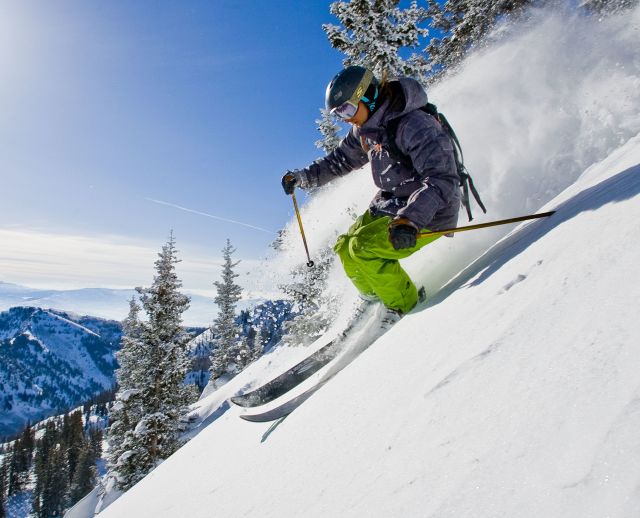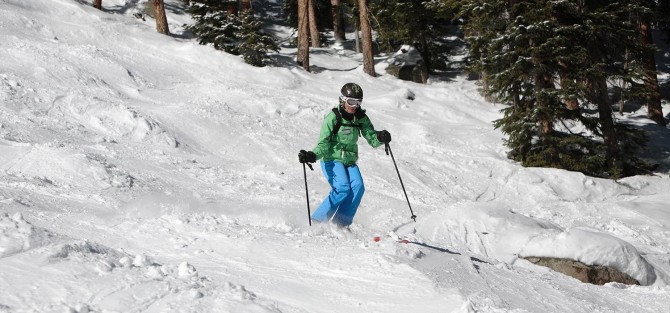
Cross country skiing no tracks is a great way to get out and enjoy the snow without the hassle of groomed trails. It gives you the opportunity to ski on a snowy winter trail uncrowded by other skiers and offers stunning views of surrounding areas.
It's great for stretching your legs and improving your skiing skills. It's also great for families and friends looking for a relaxed day out in the powder.
Whether you're an experienced cross-country skier or a beginner, if you want to enjoy the snow, you'll need the right gear. You can find classic cross-country skis, traditional skate skis and boots at your local Nordic centre or online.
Cross-country skiing on trails requires specific equipment. Make sure you take this into account when you shop for gear.

If you're just getting started, you should begin with a pair of beginner-to-intermediate classic cross-country skis and an easy-to-use pair of cross-country ski poles. These will help you practice classic ski stance, shuffle, and glide so you can build your confidence before you move on to a more advanced package.
Lightweight backcountry skis are recommended for cross country skiers who want to ski off-trail terrain. These have steel edges to aid you in carving turns on downhills. They have a sculpted waist, rockered tip, and can be used with AT, telemark, or touring bindings.
A set of lightweight cross country skis should be large enough to fit most people but small enough not to cause extra friction on icy roads. A sidecut, or variation in the ski's width, is also a good feature to give you better control over steeper hills.
The skis should have equal weight distribution on both the sides. Your skis should feel slightly 'cushy' when they come into contact with the snow. This is similar to how you feel walking on soft ground.
You can also 'bounce the skis slightly off snow. This will allow you to 'bounce’ into the next turn rather than sliding down the snow and losing your momentum.

Once you have mastered these skills, you can learn new techniques. You can snowplough, parallel skid and kick turn to get more speed out of a track, or you can use step turns and tucking to avoid obstacles on your way downhill.
Always check the weather forecast before you go. This will tell you if the trail is safe and what unexpected problems might occur that could cause injury to other skiers.
The forecast can also tell you if there are any ice patches, blowouts or other conditions that might make skiing dangerous. This can be particularly true if the weather is cold. If it is, you may need to abandon the trail.
FAQ
Should I purchase travel insurance?
Travel insurance is important if your plans include adventure travel. It's important that you are covered for all kinds of adventure sports.
If you plan on skiing, make sure that you have health insurance. You should also look into getting coverage for things like theft, loss, and damage.
Cover for cancellation should be considered. This allows you to cancel your holiday without having to pay any penalties.
It is also a good idea if you are able to get emergency evacuation cover. In the case of an avalanche and other natural disaster, you can be evacuated from the mountain.
How long does a flight take between two countries.
The distance between the airports, as well the weather conditions, can impact the time required to fly.
The average flight takes around 3 hours.
The actual flying time will depend on several factors including the airline, the aircraft type and delays at the airport as well as weather conditions.
What is the first thing to do after arriving at your travel destination?
Always have a plan in place for when your arrive at a new location. This helps you to know what to expect and where you should go next.
You need to plan ahead to ensure you don't miss anything important.
For example, if you're going to be visiting a city for more than one day, you should research which museums, parks, and landmarks you'd like to visit.
A map of the area may be useful and you might want to read up on the history.
How can I travel light and how do I get there?
There are many options when it comes to packing for a trip. These tips will help guide you in choosing what to bring on your trip.
-
Only bring what you need.
-
Pack only what you'll actually wear.
-
Do not buy too many.
-
Check your suitcase for space.
-
Always make sure you have everything you need.
-
Make use of the free storage facilities
-
Reusable water bottles can be used instead of buying bottled.
-
You can carry a backpack rather than a suitcase.
-
If possible, take public transport and walk or cycle instead.
-
Select the right bag size
-
Avoid carrying bulky items.
-
Be prepared for any eventuality.
-
Don't leave anything behind
What should you never forget when traveling?
You will find yourself in situations that leave you with very little time for making decisions when you travel. Prepare to be flexible.
You may be stuck someplace for hours or days, or even months. You can plan ahead to ensure you have water, food, shelter, and somewhere to sleep. But if you haven't, you may have to improvise.
In these cases you will need to rely on your best skills. This means that you will need to make quick decisions based on your intuition and experience.
But sometimes, you won't have any choice. It could happen that you are stranded without cell phone coverage, run out of gas, or have been robbed. You'll need to adapt quickly to these situations.
The key to success is to stay calm, remain focused and act decisively. Don't panic. Instead, focus on what you can control.
For example, if you're lost in the woods, you can choose which direction to go. For those who are hungry, berries and mushrooms can be eaten. You can drink rainwater, or melt snow if your thirst is great.
If you are tired, you can take a break. It's okay to bundle up if it is cold. You can wear a sweater if it's cold. Whatever your choice, staying positive will help you feel better.
Where should I store my luggage
There are many options. You can use lockers at airports as the most common option. They are usually located close to the security area. They can be purchased for between $5-10 per daily, depending upon the size of the locker.
Another option is to rent a storage unit. They are usually located outside of large shopping malls or hotels. Prices vary, but some places offer discounts for multiple units rented together.
Third, you can hire a porter. The porter will carry your luggage from your carousel to your bedroom. He will charge a small service fee for each trip.
What should you bring on vacation?
It is important to plan what you will do during your vacation. Not just packing clothes. Consider where you're going and how much time you'll be staying there.
You need to think about what activities you would like to participate in. Scuba diving is a great option if you're going to exotic destinations. You might also want to participate in local festivals and events if you plan to stay longer.
You should let the people who are going to be caring for you know if you have any medical issues.
Statistics
- Pack sweaters, jackets, and underwear in reusable compression bags creating up to 75% more space in your luggage. (wikihow.com)
- You can use compression sacs or cubes to reduce the volume of your clothes by up to 80%—this is especially convenient for bulky items such as sweaters and jackets. (eaglecreek.com)
- Alcoholic beverages with more than 24% but not more than 70% alcohol are limited in checked bags to 5 liters (1.3 gallons) per passenger and must be in unopened retail packaging. (tsa.gov)
- No Checked Bags: No Alcoholic beverages with more than 70% alcohol (over 140 proof), including grain alcohol and 151 proof rum. (tsa.gov)
- Case in point: the private island of Ilha Caldeira, less than seven miles off the coast as part of the Primeiras and Segundas Archipelago, is located within the marine-protected area with 20 percent of the country's intact living coral. (travelandleisure.com)
External Links
How To
How to travel cheap
Travel is a very popular activity. But traveling can be costly. The cost of flights, hotels, rental cars, transportation, food, etc., makes traveling very costly. It's even worse when you have a family. So, how can we make it more affordable to travel?
The first step is to look at ways to lower costs. For example, if you plan your trip ahead, you may get discounts on airfare, hotel rooms, car rentals, etc. If you choose a budget hotel, you can save money. A hostel is a good option for those who don't want too expensive accommodation. You can also take public transportation and use Airbnb to rent a room in someone's house.
To avoid extra fees, you should consider spending a bit more. A SIM card is a SIM card that you can use to connect to Wi-Fi. By doing this, roaming costs are eliminated. You can also order pizza or pasta outside to reduce the cost.
Try to divide the expenses. If you have relatives or friends who are willing to split the bill, this is a great idea. Perhaps you could work together to book your tickets. Sharing expenses reduces stress and helps you save money.
If you are still unable to afford travel, you can always go hiking/camping. These activities are often completely free. Just bring water, snacks. Insect repellent, sunscreen, insect repellent and a first aid kit.
There are many ways that you can make traveling more affordable. You can think creatively and come up unique ideas.